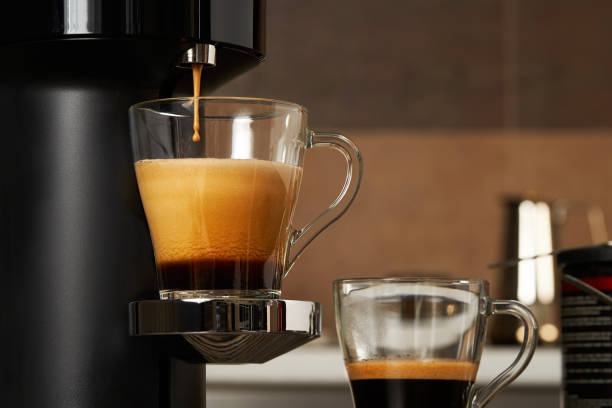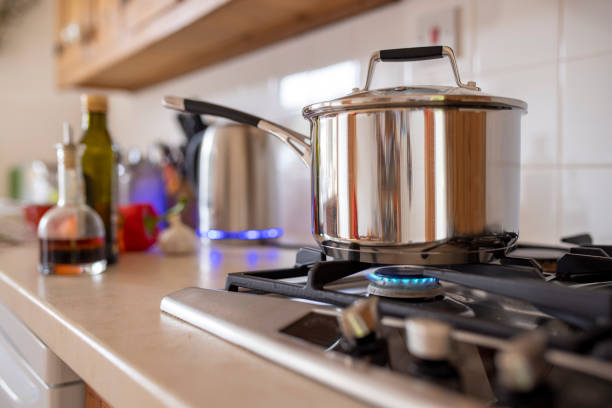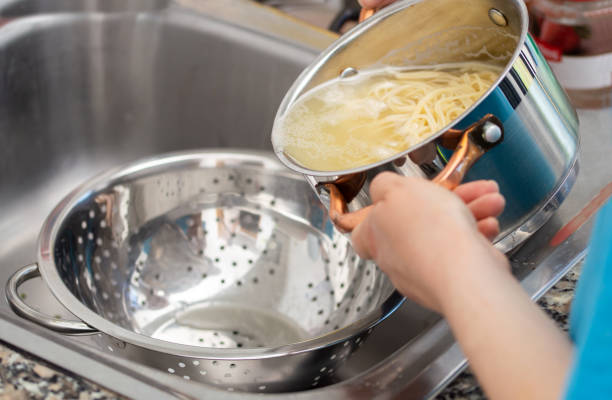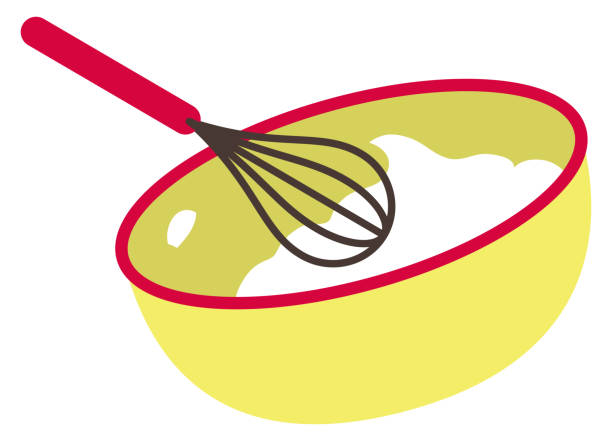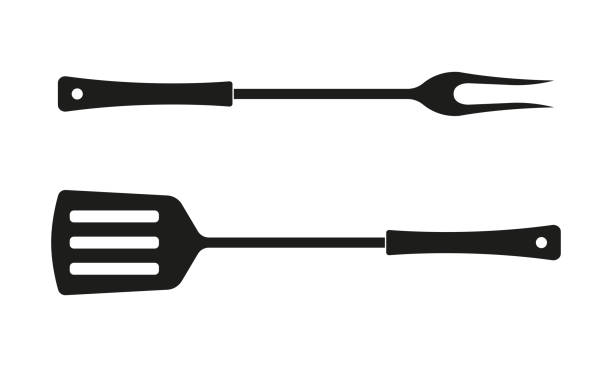The Coffee Maker: Brewing the Elixir of Mornings
In kitchens worldwide, the coffee maker stands as a revered sentinel, presiding over the daily ritual of brewing the elixir that kick-starts the day for millions. From the aromatic embrace of freshly ground beans to the comforting hum of the brewing process, the coffee maker plays a pivotal role in shaping our morning routines and social interactions. In this exploration, we delve into the history, mechanics, and cultural significance of the coffee maker, unraveling the story behind this indispensable appliance.
Historical Tapestry of the Coffee Maker:
The tale of the coffee maker is woven into the rich fabric of coffee’s journey from ancient Ethiopian coffee ceremonies to the bustling cafés of modern cities. While early methods involved boiling coffee grounds directly in water or using improvised filters, the birth of the modern coffee maker can be traced to the 19th century.
In 1822, the French inventor Louis Bernard Rabaut developed the first known percolator, a device that circulated water through coffee grounds, producing a more efficient brewing process. Subsequent innovations, such as the drip brewing method, paved the way for the creation of the iconic drip coffee maker. The mid-20th century saw the emergence of automatic drip coffee makers, popularized by brands like Bunn and Mr. Coffee, bringing the convenience of push-button brewing into homes and offices.
Components and Mechanisms:
The modern coffee maker is a marvel of engineering, designed to extract the optimal flavors and aromas from coffee beans. While variations exist, most coffee makers share common components and mechanisms:
- Water Reservoir: The water reservoir stores the water needed for brewing. Some coffee makers have built-in water filters to enhance the quality of the water used in brewing.
- Coffee Basket or Filter: Ground coffee is placed in a filter or basket, allowing hot water to pass through and extract the flavors. Filters can be paper, metal, or reusable depending on the coffee maker model.
- Brewing Chamber: The brewing chamber is where the magic happens. Hot water from the reservoir is pumped or gravity-fed into the coffee grounds, facilitating the extraction process.
- Heating Element: The heating element, typically a heating plate or boiler, brings the water to the optimal brewing temperature. In more advanced models, the temperature is often adjustable to cater to different coffee preferences.
- Brewing Process Control: Automatic coffee makers come with controls for adjusting brewing time, water temperature, and other factors. Some models feature programmable timers, allowing users to wake up to a freshly brewed pot.
- Carafe or Coffee Pot: The carafe or coffee pot collects the brewed coffee. It can be made of glass, thermal materials, or stainless steel, with options for keeping the coffee hot for extended periods.
Types of Coffee Makers:
The world of coffee makers is diverse, offering options tailored to different preferences and lifestyles. Here are some common types:
- Drip Coffee Makers: These are the workhorses of the coffee maker world, utilizing the drip brewing method. Water is heated and dripped over coffee grounds, gradually filling a carafe with freshly brewed coffee.
- Single-Serve Coffee Makers: Popularized by brands like Keurig and Nespresso, single-serve coffee makers offer convenience and variety. They use pre-packaged coffee pods or capsules, allowing users to brew one cup at a time with minimal effort.
- Espresso Machines: Espresso machines, whether manual, semi-automatic, or fully automatic, specialize in brewing concentrated coffee known as espresso. They are favored by coffee connoisseurs who appreciate the bold and intense flavors of espresso.
- French Press: Also known as a press pot or plunger pot, the French press is a manual coffee maker that immerses coarsely ground coffee in hot water. After steeping, a plunger is pressed to separate the grounds from the brewed coffee.
- Pour-Over Coffee Makers: Pour-over methods involve manually pouring hot water over coffee grounds, allowing for precise control over the brewing process. Devices like Chemex and Hario V60 have gained popularity among coffee enthusiasts.
Cultural Significance:
Beyond its utilitarian function, the coffee maker holds a special place in cultural traditions and social interactions. Here are a few ways in which the coffee maker contributes to the cultural tapestry:
- Morning Rituals: For many, the day begins with the comforting routine of preparing and enjoying a cup of coffee. The coffee maker, with its familiar sounds and aromas, sets the tone for the day’s adventures.
- Social Gatherings: The act of brewing coffee is often a communal experience. Whether in homes, offices, or coffee shops, the coffee maker becomes a focal point for conversations and shared moments.
- Office Productivity: In office environments, coffee makers are productivity catalysts. The communal coffee pot serves as a meeting point, fostering informal discussions and providing a much-needed caffeine boost for busy professionals.
- Coffee Culture: The surge in coffee culture has elevated the coffee maker to a symbol of craftsmanship and artisanal appreciation. From specialty pour-over techniques to the meticulous art of espresso extraction, the coffee maker has become a canvas for expressing coffee mastery.
- Culinary Creativity: Coffee makers are not limited to brewing coffee. Creative minds have explored alternative uses, from making infused syrups and herbal teas to concocting unique culinary creations using the brewing apparatus.
Maintenance and Care:
To ensure the longevity and optimal performance of your coffee maker, regular maintenance is key. Here are some tips for keeping your coffee maker in pristine condition:
- Descaling: Over time, mineral deposits can accumulate in the coffee maker’s water reservoir and internal components. Descaling solutions or a mixture of vinegar and water can be used to remove these deposits periodically.
- Cleaning: Regularly clean the coffee basket or filter, carafe, and other removable parts. Some parts may be dishwasher safe, while others require handwashing. Check the manufacturer’s instructions for guidance.
- Changing Filters: If your coffee maker uses water filters, be sure to replace them according to the recommended schedule. This ensures that the water used in brewing is of high quality.
- Emptying Reservoir: If your coffee maker has a water reservoir, empty it when not in use to prevent the growth of mold or bacteria. Some models also have a self-cleaning feature that can be activated periodically.
- Regular Inspections: Check the power cord, heating element, and other components for signs of wear or damage. Address any issues promptly to prevent safety hazards and maintain the coffee maker’s efficiency.
Conclusion:
In the symphony of kitchen appliances, takes center stage, orchestrating the aromatic crescendo that signals the beginning of a new day. From its humble origins to the diverse array of modern designs, the coffee maker has evolved alongside our changing lifestyles and coffee preferences. As technology continues to advance, the coffee maker remains a steadfast companion, ensuring that the simple act of brewing coffee remains a source of comfort, connection, and creativity for generations to come. So, the next time you savor that first sip of your favorite brew, take a moment to appreciate the magic happening within the confines of your trusty coffee maker, transforming humble coffee beans into a liquid symphony that fuels your day.
